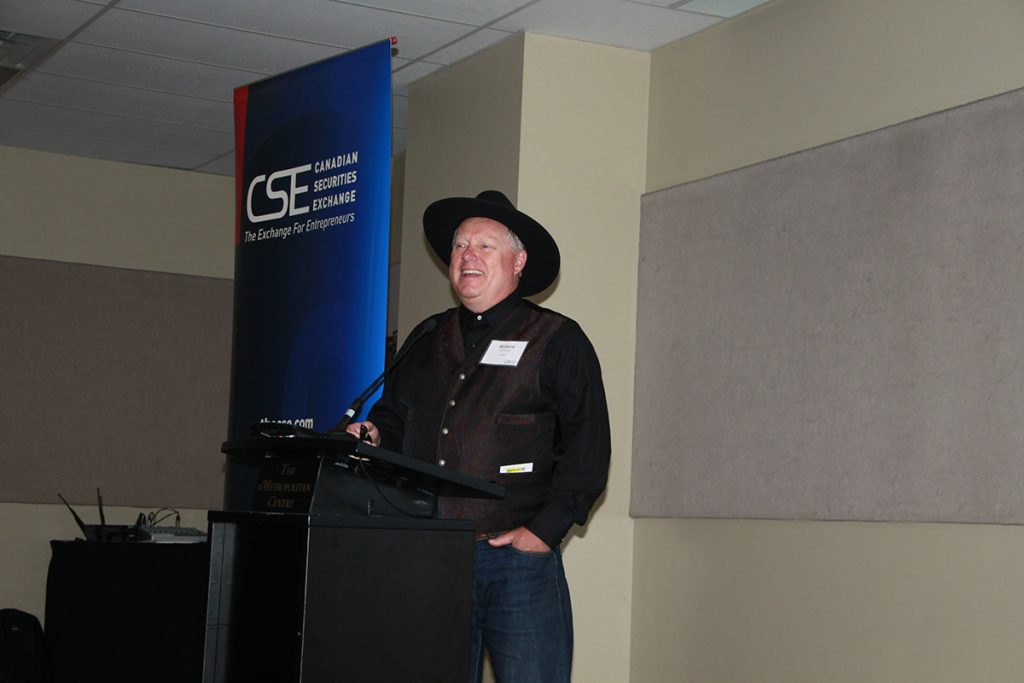
Earlier this month, CEO of the Canadian Securities Exchange, Richard Carleton, sat down with Peter Murray of Kiyoi Communications, to discuss the performance of the CSE in the first half of 2017 as well as to get the CSE’s perspective on a number of issues related to Canadian public markets, the evolving cannabis sector and innovation at the CSE.
Scroll down to read the full transcript of this interview. For ease of navigation, a list of hyperlinked topics is included.
- State of the Canadian microcap sector
- US companies choosing to list on the CSE
- Migration from the CSE
- Performance of the 1st half of 2017 at the CSE
- Reducing regulatory burden on small-cap issuers
- Simplifying access to marketplace data
- CSE marketing efforts
- Overview of cannabis sector
- Growing sectors
- Digital innovation at the CSE
State of the Canadian microcap sector
PM: Media outlets have published several articles recently on the demise of the microcap issuer, pointing to reductions in IPO activity, capital raised and issuer numbers. The CSE is doing quite well servicing this segment of the market these companies. What are your opinions on the state of the microcap sector?
RC: There are different ways to assess the health of the sector, some of which are pretty encouraging. One of the concerns expressed in an article published by the Globe and Mail recently was that the number of companies listed on Canadian exchanges has declined quite considerably. What they did not refer to was that there are some 320 companies listed on the Canadian Securities Exchange, and this was not the case eight or nine years ago.
In other words, some of those missing companies are not missing at all – they are listed on the Canadian Securities Exchange.
That said, we’ve obviously gone through a prolonged slump in the mining and oil and gas exploration sectors. This has an impact on the overall health of the Canadian markets because Canada has been very good historically in terms of creating large numbers of these types of public companies.
The bottom line is that public capital is always there, but raising that capital is never going to be easy. Quite frankly, it is not supposed to be easy. But with price weakness in some of the commodities that underpin the value of Canadian resource companies, applying the model of raising public funds for pre-revenue companies has been a bit of a struggle.
Fortunately, the tremendous growth in the legal cannabis space since the spring of 2014 has served as a counterbalance. We are increasingly seeing old fashioned IPO-type deals where companies are raising tens of millions of dollars, and even into nine figures, in ways that remind one of the good old days, with Canadian investment dealers conducting a wide distribution on behalf of the issuer.
So, what we really have is a kind of dichotomy where the traditional Canadian small-cap space continues to suffer a high degree of stress. But the sunrise industry that is the legal cannabis space in Canada and the United States has attracted a lot of attention from investors and the investment dealer community.
US companies choosing to list on the CSE
PM: The CSE has welcomed several issuers based in the United States over the past few years. What is the attraction for US companies in listing on the CSE, and in general what do they tell you about their listing and post-listing experiences?
RC: The reason they come to Canada is that they can raise money here. In the United States, deals in the $20 million to $40 million range are the realm of the venture capital and private equity investment communities. Some companies don’t want to go down that route because there can be significant drawbacks when you accept money from these types of investors.
Specifically, entrepreneurs find that venture capital funds and private equity funds exert a tremendous level of control over investee companies, as you would expect when they are investing the amounts of money we are talking about. An important advantage to raising funds publicly is that you often retain more control over the future direction of the enterprise.
Another issue is that the exit scenarios for private funds may be at odds with those of a company’s founders. Funds may be more interested in an early trade sale, rather than continuing to finance the company to the point where it is one of the big and truly successful entities in its space.
The result is that we see companies looking to raise the smaller amounts available in Canada through the public markets. And the cost of that capital tends to come in lower than if they were raising money privately in the United States.
Migration from the CSE
PM: A number of companies have successfully grown their operations on the CSE but then left for other exchanges as they reached a point they felt warranted such a move. Can you share your views on why this happens?
RC: There are two issues in play in my opinion. The first is something the team at the Canadian Securities Exchange is working to address, and that is a bias held by some members of the institutional investment community.
When companies are looking to raise large amounts of money – and again I am talking high tens of millions, or over $100 million – many institutional investors are more comfortable with the incumbent exchanges because they have worked with them before and they understand their standards and procedures. It really is up to the CSE to better communicate our value proposition and our reliability as a partner to these institutions, because we have a lot to offer. This is definitely something we are working diligently on.
The other issue is that if a company believes it will have sufficient market capitalization and trading turnover to qualify as an index component on the Toronto Stock Exchange, public company managers may see that as a powerful inducement to move. Once you join the index it means the company is likely to be followed by several analysts and its shares will be included in a variety of portfolios held by investors both domestically and internationally.
Those two factors combined can create, under certain circumstances, an incentive for companies to move to another exchange.
I do believe, though, that some of this thinking is rooted in the past.
If one looks at the trading volumes and amounts of capital being raised on our exchange in the first half, a well-run company clearly can achieve its goals with a CSE listing. Not to mention the advantages we offer from cost and other perspectives.
Performance of the first half of 2017 at the CSE
PM: It has been a good first half for the CSE and the financial community is increasingly supportive of what the exchange and its issuers are working toward. Can you briefly review the half for us and share some of the approaches that seem to be succeeding for issuers right now?
RC: We have a number of projects underway at the exchange and one I would highlight is the update to our listing standards.
We updated the initial listing standards last year and are now in the process of introducing continued listing standards. Our intent is to ensure that companies listed on the exchange are active businesses, which means that the ones hanging on purely for shell value are not going to qualify for continued listing unless they can show that there is an imminent opportunity for a transaction.
We are receiving a lot of support from both the investor and issuer communities for this effort. Last year, we delisted almost as many companies as we listed, which was almost 10% of the listed company register. We want to assure investors that the companies that remain listed are active.
In the first six months of the year, CSE issuers raised a record amount of capital ($320 million). I think observers would expect that it is flowing mostly into the legal cannabis space, but actually this sector accounted only for about half of the total. We have seen a variety of companies in the financial technology space, clean technology and mining add significantly to their treasuries.
Again, although capital is scarce and companies are having to work hard to obtain it, they are certainly doing so at record levels on the Canadian Securities Exchange to this point in the year.
Reducing regulatory burden on small-cap issuers
PM: The CSA (Canadian Securities Administrators) recently released for comment a list of proposals designed to reduce the regulatory burden on small-cap issuers. Can you discuss the CSE’s positions on some of the key recommendations?
RC: Most of the recommendations are aimed at small- to mid-cap companies listed on the Toronto Stock Exchange. So-called venture issuers, which covers companies on the CSE, are already afforded relief from some of the reporting requirements imposed on public companies. Essentially, the CSA was looking to extend similar relief to some of the companies listed on the Toronto Stock Exchange.
The key measure in the discussion paper was a proposed reduction in the financial reporting cycle from quarterly to semi-annually. Basically, only the audited annual financial statements and a half-year summary would be required from public companies.
The CSE does not support this proposal, and neither do the vast majority of companies, financial advisors and accounting firms we have spoken with.
Quarterly reporting is not burdensome, and in fact the decrease in transparency resulting from a move to semi-annual reporting would increase the cost of capital for small companies. So, while the idea is well-intentioned, we think it would bring about the opposite of its intended goal.
What we would like to see is significant change in how the exempt markets in Canada are managed and regulated. For example, we would like to see regulation similar in nature to Regulation A+ in the United States, which gives individual investors an opportunity to invest in exempt market companies up to individual deal limits and annual limits.
What this means is that smaller retail investors would be able to participate in opportunities that at this point are only available to accredited investors and institutions.
We think this is important to engaging the next generation of investors because the average accredited investor is getting on in years. We are concerned that younger investors are not getting the opportunity to invest in the kinds of growth stories they should.
Simplifying access to marketplace data
PM: I know you are working on a consortium of sorts to address data fee costs for investors. What are the specific issues at play here and what do you hope to achieve?
RC: I have some good news to share on this topic.
First, though, the background is that any professional investor looking to get a full picture of what is going on in Canadian equity markets must sign contracts and pay fees to each of the individual exchanges if they want access to real-time data. Not surprisingly, the fees add up pretty quickly. Canadian data can thus be considerably more expensive than in other markets around the world. It is another resistance point we just don’t need.
The Ontario Securities Commission was successful in late June in its long-term effort to gain jurisdiction over marketplace data. It looks as if the commission will seek to exercise that jurisdiction to address the pain points that professional data users currently suffer. It remains to be seen what specific approaches to the problems the regulators are going to take.
This is a positive development from our point of view because there is a large transparency deficit at present.
The CSE and some of the alternative exchanges do not reach the same scale of user population that the TMX exchanges do from a data-subscription perspective. And that means a significant transparency deficit exists in the marketplace.
It looks as if we will be asked to take a leading role in helping to define what the data delivery model, fees and terms look like in coming years for marketplace operators in Canada.
CSE marketing efforts
PM: The CSE team has been very active in the first half of the year hosting CSE-branded events and participating in investment conferences. Can you share with us the goals and some of the achievements on the marketing side?
RC: Our team has been extraordinarily busy this year, literally traveling all over the Northern Hemisphere – Europe, Asia, and across North America.
We always pursue two goals: to explain to the international and domestic investing public what the value proposition of the Canadian Securities Exchange is, and to meet with issuers, investors and advisors so that we continue to build the list of companies we present through our facilities.
The favourable reception we receive at virtually every stop is extremely gratifying.
I am amazed when I sit back on a given day and try to figure out where the various members of the CSE team are, because we have literally crossed the northern half of the globe several times over the course of the first half of 2017.
Overview of cannabis sector
PM: Cannabis companies have experienced some ups and downs since entering the public markets a few years ago but the sector in general seems to be getting itself on a steadier track now. While most of the early movers focused on opportunities in Canada, many of what one might term the “second wave” of issuers seem set on operating in the US. What is next for the cannabis sector in your opinion?
RC: I actually think of the US companies as the third wave. The first wave was the licensed medical marijuana producers in Canada. Next, we saw entities in ancillary industries – extractors and alternative delivery systems are good examples. The third wave is clearly companies that have business interests in the United States and are ramping up to address the coming legalization for adult use in very large jurisdictions.
We speak to people in this industry on a regular basis and the numbers are mind-boggling.
California’s population is roughly that of Canada, and they are on a similar timeline as Canada to legalization. Cultivators there are looking to raise billions of dollars to build the operations necessary to supply the state’s legal market.
Given that one of the objectives of government policy in every jurisdiction is to displace the black market, it is critically important to the success of those policy directions to enable the legal market to meet the demand from the adult-use side.
It is fair to say that we have not seen anything yet in terms of how big this is going to become. There will be a steady stream of companies in this space with solid business plans looking to build out and meet the dawn of a significant new industry in North America.
Growing sectors
PM: Are there any market sectors right now that remind you of what cannabis felt like in 2014?
RC: In the sense that the legal cannabis market is one of the most significant new business opportunities to hit public capital in a long time, I can’t really say I sense anything up and coming of the same magnitude.
As I mentioned before, we see a lot of different stories getting funded, but I think we are going to continue to see the legal cannabis space driving a substantial percentage of our growth as we make our way through the rest of 2017.
Digital innovation at the CSE
PM: The infrastructure supporting securities trading and information exchange is predominantly digital these days. How has the CSE navigated the rapidly evolving digital landscape?
RC: There are a variety of things I would like to see happen faster than they are today.
One of them relates to information released by issuers, where I would like a more aggressive implementation in Canada of a protocol called XBRL (eXtensible Business Reporting Language). This basically refers to digitally tagging news and company filings with the regulator. The practical impact is that an analyst can download a company’s financial history directly into spreadsheets. At the present time, an analyst wanting to initiate coverage on a CSE company has to manually key its financial history into a spreadsheet.
To put it mildly, that is a massive time commitment, with significant potential for error involved.
I would really like to see the Canadian exchanges and regulators get together on a taxonomy of XBRL for reporting financial information for public companies in Canada. It has already been mandated for use in the United States.
We have also implemented a new trading system and a variety of new technologies around that system. Although it was a significant investment for us, the benefits have been immediate, including lower operating and data centre costs.
We don’t describe ourselves as a technology company but we do certainly avail ourselves of those tools in a significant way and they up our game from a customer service perspective while helping us to manage costs.




























































